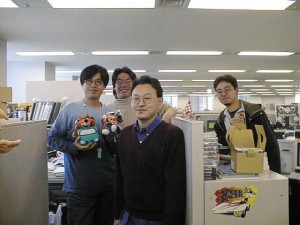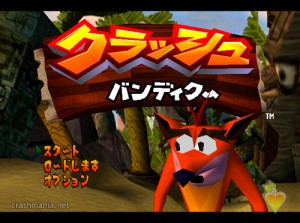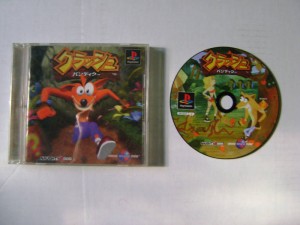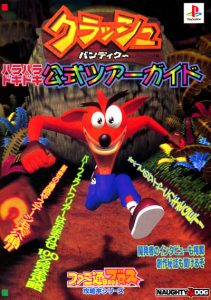It’s probably hard for younger gamers to recognize the position in gaming that Japan occupied from the mid eighties to the late 90s. First of all, after video games rose like a phoenix from the “great crash of ’82” (in which the classic coin-op and Atari dominated home market imploded), all major video game machines were from Japan until the arrival of the Xbox. Things were dominated by Nintendo, Sega, Nintendo, Sony, Nintendo, Sony… you get the picture.
And in the days before the home market eclipsed and destroyed the arcade, Japan completely crushed everyone else. Only the occasional US hit like Mortal Kombat even registered on the radar.
All of this, not to mention the cool samurai/anime culture and ridiculously yummy food (see my sushi index!), made us American video game creators pretty much all Miyamoto groupies.
But on the flip side, American games, if they even made it to the land of the rising sun at all, almost always flopped.
Japanese taste is different the wisdom went. Special. Foreign games even had a special name over there (which I have no idea how to spell). These “lesser” titles were stocked in a seedy back corner of your typical Japanese game store, near the oddball porn games.
So it was with great enthusiasm and limited expectations that we approached the mutual Naughty Dog, Mark Cerny, and Sony decision that we were going to take the Japanese market really seriously with Crash. Sony assigned two brilliant and dedicated producers to us: Shuhei Yoshida and his then assistant Shimizu (aka Tsurumi-0600). They sat in on every major planning meeting and we scheduled the whole fall for me to localize the game in exacting detail (while we were simultaneously beginning work on Crash 2!).
For the most part, Yoshida-san made things happen and Shimizu, who has literally played like every video game ever made and read like every manga, worked the details. I (with a bunch of help from the artists) had to put in the changes.

Yoshida-san front and center, Shimizu on the far left, Rio (joined the team during Crash 2) on the far right
Somehow Yoshida-san was able to maneuver the game into being not one of those funny foreign games, but an official bona fide release of Sony Computer Entertainment, Inc. the first party Japanese studio. And it was to be sold and marketed pretty much like it had been made in Japan! Wow!
So to pull off this cultural masquerade Jason and I decided that Shu (as Yoshida-san was affectionately known) and Shimizu got pretty much whatever they wanted. They after all, knew the mysterious Japanese market. Which turned out to be pretty darn true. And, besides, both are really really smart and crazy hard workers (Shimizu is famous for sleeping under his desk) and so we all got along famously.
The gameplay itself wasn’t really too much of an issue. Shimizu did help us smooth out some sections and make them easier (often by adding extra continue points − opposite of Europe). But there were a lot of other changes.
First of all, we had to translate the text. Some of this wasn’t so bad. But the main logo was a 3D object and Jason had to painstakingly create a version of the paper design the Japanese provided us — which required lots of checking from Shimizu as he doesn’t speak Japanese.
http://www.youtube.com/watch?v=s4XzmZyiIXA
Above is the opening in Japanese.
And things got even harder (for me) with the in game text. The Playstation didn’t have a lot of video memory and we were using a medium resolution 512 pixel wide mode anyway. What little there was, we had pretty much consumed. But the Japanese language has four alphabets! One is Latin, two are similar but different looking phonetic alphabets, and the last is the giant Kanji pictographic database. Kanji would’ve been impossible, but we needed to cram the two extra phonetic sets in. Plus the characters are more intricate than the Latin alphabet and need more pixels. I can’t remember what I did to squeeze them in, but I do remember it was painful. One part I do recall was implementing the sets of letters that vary only by an extra dot or ” mark by drawing them with two sprites (hence saving video ram).
Once the font was installed we had to input the crazy looking “shift JIS” text. One of the problems in those days was that the text editors all 8-bit, unlike today were 16-bit typesets dominate. And with a European language you can usually tell if a line of text had gotten swapped or mangled, but in Japanese… and even worse, in shift JIS it just looks like a bunch of garbage characters.
So again, Shimizu had to check everything. A lot.
Our opening and closing cut scene dialog was recorded in Japanese using very high profile Japanese actors (so they told me). We replaced those audio files (using one of my automated systems of course!). There were also a good number of cases throughout the game where we had placed text in textures. The configuration screens, loading screens, load/save screens and all sorts of other ones. These all needed new versions. We collected all of these textures, shipped them out to Japan and got back Shimizu certified versions in exactly the same sizes with the Japanese text. I used and upgraded the system that I had built for the European version so that any file (texture, audio, etc) in the game could be “replaced” by a file of the same name in the same directory with a .J on the end (or a .S, .E, .F, .G, .I for various European permutations). The level packaging tool would automatically suck up the most appropriate version and shove it in the J versions of the levels. I’m not sure we left ANYTHING untranslated. Even Japanese games usually had more Engrish. Achem, English. I so remember a Castlevania with “Dlacura’s grave.”
Then the Japanese came up with this idea of having Aku Aku explain various gameplay mechanics to you when you break his boxes, much like the raspberry boxes in Super Mario World. This was a great idea, except it meant that the game was suddenly filled with about 200 extra paragraphs of text. Undecipherable text. I had to squeeze that into the levels too. More problematic was the seemingly simple fact that when a big block of text comes up on the screen the game effectively needs to pause so the player can read it. You can’t just “hit pause” but need a separate state. This simple feature caused a lot of bugs. A lot. But we stomped them out eventually.
http://www.youtube.com/watch?v=WojXNCbHOmY&feature=related
Above you can see a walk through of the first level. A lot of the PITA localization work was in the save screens (big fun: character entry screen in three Japanese alphabets) and the various statistic screens at the end of the level. I think the Japanese allowed us to do away with the horrible password system and use memory card only.
The Japanese also had some famous actor record a whole collection of really zany sounding grunts and noises that Crash was to make. Shimizu lovingly crafted long lists of extremely specific places in the game where exactly such and such exclamation was to be uttered. He was never one to spare either of us from a great deal of work 🙂 But his willingness to tackle any task himself, no matter how tedious, made him hard to refuse. I also had to squeeze all these extra samples into the extremely tight sound memory, mostly by downgrading the bit-rate on other sounds. This caused Mike Gollom, our awesome sound design contractor to groan and moan. “3.5k is pure butchery” he’d complain. I found this SGI tool that used a really advanced new algorithm to downgrade the sounds, they sounded twice as good at any given bit-rate than the Sony tool.
Anyway the really funny bit about these Crash sounds was the subjective feel they left us Americans with. Strange! They made Crash sound like a constipated old man. But the Japanese insisted they were perfect. I guess they were right because the game sold like crazy over there.
Another weird audio difference was that five of the songs were swapped out for new ones. Josh Mancell the composer put it this way:
An 11th hour decision made by the Sony people in Japan. They felt that the boss rounds needed to sound more ‘video game-like’. The only reference they gave was music from the Main Street Electrical Parade at Disneyland. I only had a day or so to write all those themes. My favorite comment was about the original Tawna bonus round music. It roughly translated into ‘the sound of the guitar mixed with the tree imagery is too nostalgic-sounding’. I’m still scratching my head on that one.
You can find the different tracks here.
There were also a host of minor but strange modifications we needed to make. One was that a few characters originally had four fingers, which is typical of most American cartoon characters. Apparently the Japanese have a more than usual dislike of disfigured humanoids. Fingers were added (to make them the normal five). There were a whole bunch of little visual, audio, and gameplay changes Shimizu had us make to the game. Most of these I felt were neutral, different but not really better or worse, so I just trusted him and put them in. Occasionally if they were a really pain I pushed back.
Eventually, right around Thanksgiving, just in time for Jason and I to head to Japan to promote it, the Japanese version was ready!
Coming soon, I plan on a part 2 covering Japanese marketing and promotions!
If you didn’t catch it, I have a similar detailed post in the European localization of Crash.
| If you liked this post, follow me at:
My novels: The Darkening Dream and Untimed |







